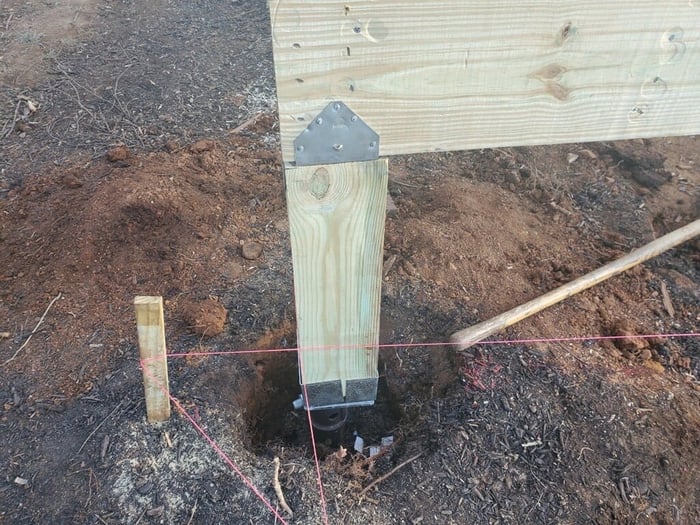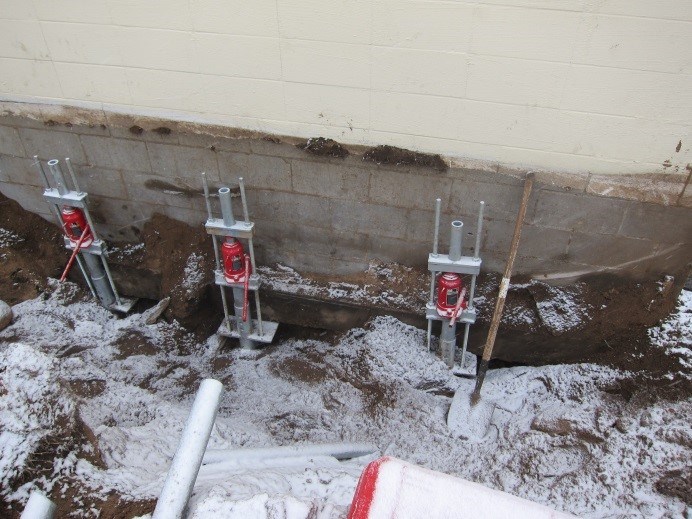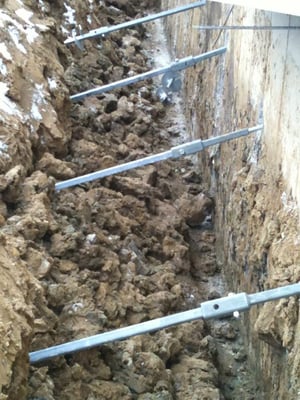
What Do Foundations Made with Helical Piers Cost?
Are you thinking about adding a project that requires a foundation to your Virginia or Maryland home? If you assumed excavation and concrete footers were your only option, there is another way: helical piers. What does this system entail, though, and what do helical piers cost relative to the traditional concrete footers?
What Are Helical Piers?
Helical piers are an all-steel foundation solution. Steel poles are drilled into the ground until they hit solid rock or load-bearing soil. In a traditional concrete foundation, you dig down approximately ten feet, but your footers are still resting in dirt. This creates the potential for settling and foundation issues down the line.
This includes
- cracked walls,
- uneven floors, and
- sticky windows.
Helical pier foundation systems are offered by companies such as PierTech.

In extreme cases, these foundational issues can even threaten the structural integrity of the house and jeopardize your home’s value.
Read here for more detailed information about PierTech versus traditional footer systems.
Price Comparison between Helical Piers and Concrete Footers
Every pier is around $175, and there are two piers required per hole. That puts you somewhere in the range of $350 per hole, of which a project typically needs six to eight. For hard materials, you’re sitting around $2,100 to $2,800.
With concrete, hard materials can range from a few hundred dollars to a thousand, depending on your specific build. The key, though, is that you’re also paying thousands in labor because of the time-consuming nature of digging and pouring concrete.
With excavation, there’s also the expense of yard repair to factor in when the project is complete. This can be anywhere from negligible to significant.
Overall, installing piers is at least 20 percent more productive than digging, and many homeowners find piers end up being the same price or cheaper for a stronger, more reliable system.
This is also to say nothing of costly repairs down the line if you do experience significant sinking or settling with your traditional foundation.
Advantages of Helical Piers over Traditional Footers
- No more digging holes. With helical piers, there’s no longer a need to dig massive holes or to brace them to prevent collapse. This speeds up the project, but it also means you don’t have to take on the expense of paying highly skilled, trained builders and contractors to manually dig holes.
- Happier crew. At Design Builders, we love what we do, but there’s nothing fun about digging holes! The minute we moved to helical piers and eliminated excavating from jobs, morale went through the roof. The crew immediately became even more productive and happier.
- Less yard repair. When you use a traditional footer system, you’re potentially digging up and destroying large swaths of the homeowner’s yard. With the pier system, you don’t have to take on that expense or hassle.
- Quicker installation. Using the helical piers takes about thirty minutes a hole. For an entire project, that means you can allot about one half day. With digging, contractors had to allow at least two days for the actual excavation, one day for concrete, one days for inspection, and another day just in case something went wrong (foul weather, waylaid concrete delivery, inspection reschedule). That’s upwards of five days in hassle and labor expense with digging and less than one day with helical piers.
- Verifiable load capacity. When digging holes, the contractor had to verify the ground was solid by hand. With helical piers, you use a machine that actually gives you a verifiable, accurate, specific reading.
- 100 percent pass rate with the inspector. Because the machine tells us exactly how deep to go based on the torque being exerted back on that machine, we know we’re getting it correct every time. When the inspector comes out to assess the piers, we simply give him the printout of our digital readings, and we are given the green light. We have a 100 percent pass rate, and not dealing with multiple inspector visits also helps to speed up the project immensely.

The Wave of the Foundation Future
Similar to steel deck framing, helical piers were something we encountered quite a while ago. We met with deck builders who used them, and all contractors who put them in their jobs swore by them.
Just as moving away from pressure-treated framing toward steel made sense, this move was also a logical step—for us, as contractors, and for you, the homeowner.
Any deck project we quote in 2021 and beyond now assumes the use of these helical piers, as well as steel deck framing, Trex Transcend composite decking boards, and a vinyl handrail system.
All these elements are customizable, but that’s the package we initially offer to anyone interested in building a deck with us in the Northern Virginia or Maryland region.
Have Any Questions about Helical Piers?
If you have any questions about helical piers, feel free to reach out. Want an estimate on an outdoor living project you’re thinking about for your Virginia or Maryland home? Get your quote today!


